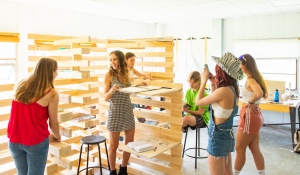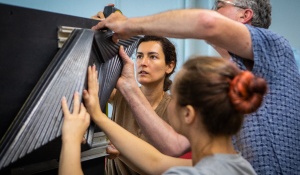Master of Science in Architecture

Assistant Professor Nicholas Bruscia outside of Crosby Hall. Photo: Douglas Levere
Students in the MS in Architecture program may choose to focus their path of study on Design for Manufacturing and Construction. This new concentration is intended to meet the demand for skilled designers that can bridge the gap between design, architectural fabrication, and construction to manage and deliver complex projects at different scales.
With direct access to advanced digital tools, manual tools, and software in our Fabrication Workshop, students will engage in industry-leading design and fabrication techniques and methods. This 36-credit concentration can be completed in one academic year with a culminating summer studio involving industry partners. Qualified Master of Architecture students in the Research Track can elevate their experience by adding this concentration with minimal extra requirements.
Students in this program will build a versatile skill set, graduating as creative and adaptable designers with a working knowledge of production-aware digital practices, material behavior, form optimization, and design-to-fabrication workflows.
From hands-on, research driven architectural design projects to a culminating thesis, this program dives into visualization techniques, technically driven inquiry, architectural geometry, construction, and digital fabrication — opening doors to exciting career opportunities.
Cost of Study
- Domestic: $5,560 - $12,870
- International: $12,870
*per semester tuition rates and does not include fees
Admissions requirements
- Application fee: $75
- No GRE required


